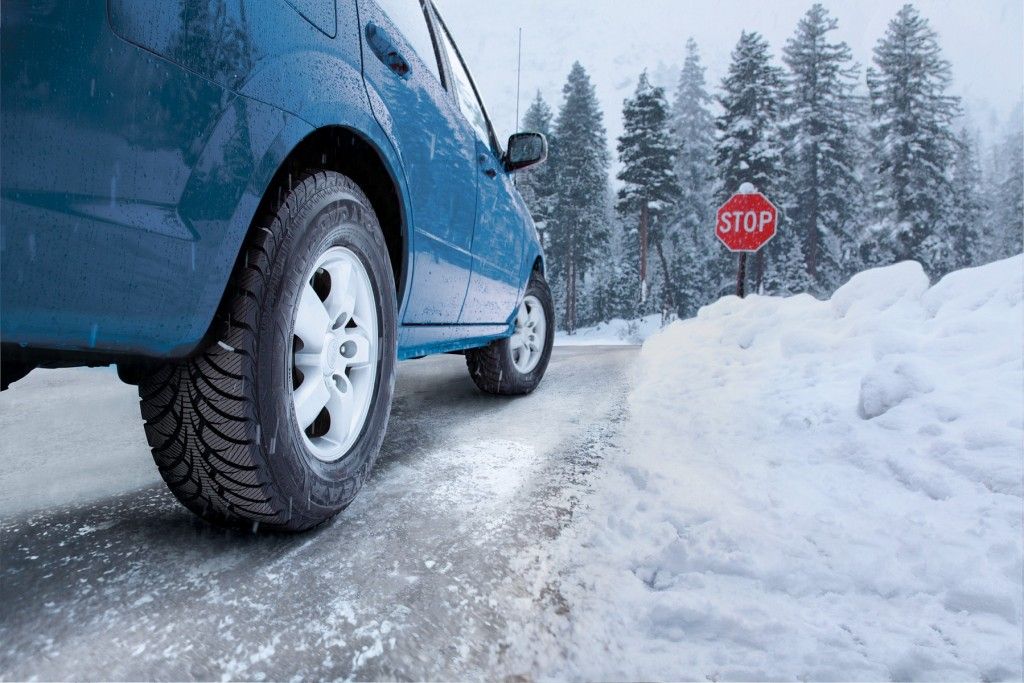How to change a tire in winter is something that all drivers need to know, especially disabled parking permit holders. Cold weather driving can be more hazardous for many reasons, one of which is the increased possibility of getting a flat tire in snow.
Cold weather puts pressure on tires and makes getting a flat tire more likely, and a flat tire in winter can be a major inconvenience for a disabled permit holder. So it’s important that permit holders educate themselves about what to do to fix a flat in winter, and how to cope with a situation when fixing a flat is not possible.
Below, we’ll talk about exactly how to change a tire in winter, as well as detailing some ways that disabled drivers can keep themselves as safe as possible when traveling during the colder months of the year.
There are a few main reasons why flat tires are more common in cold, snowy weather…
Tires will tend to lose air pressure when the weather gets colder. This is due to the air becoming denser as its temperature cools, resulting in less pressure inside the tire. This decreased air pressure inside your tires in winter can make them more vulnerable to going flat or being punctured. Keep an eye on your dashboard for warnings that your tire pressure is low. Also be sure to get your tire pressure checked at a garage every month in winter.
In many parts of the country, roads get very slippery in winter. Slippery roads can lead to flat tires, mainly by causing a driver to lose control and drive into or over obstacles that damage the tires and perhaps cause a flat.
Although roads are often in the most urgent need of maintenance and repair in winter sometimes they’re actually less well maintained around this time of year. Hazardous, freezing, low-visibility conditions can make it impossible for road maintenance crews to access certain areas at certain times – especially during busy winter months when their resources and personnel numbers are most stretched.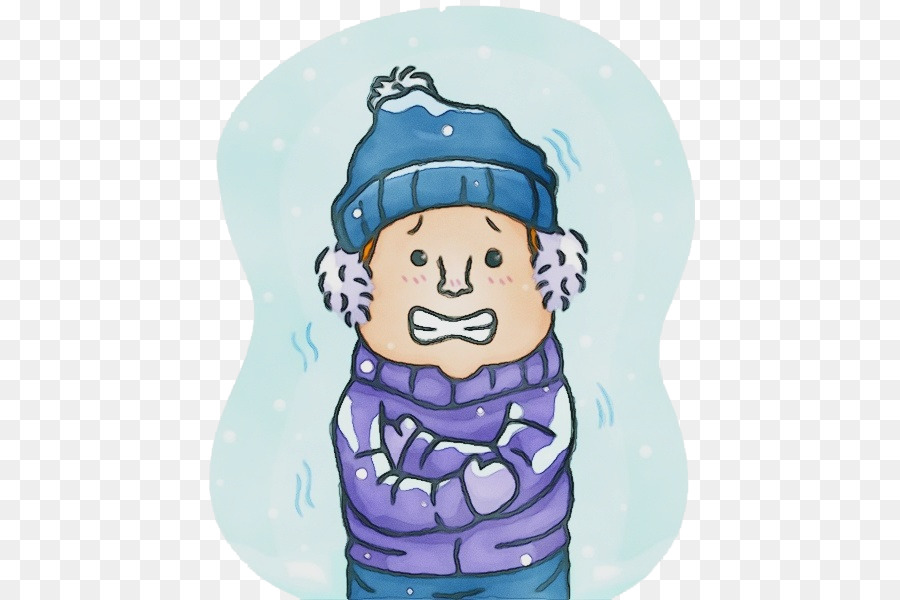 Less well-maintained roads can harbor hidden hazards such as potholes or debris that can cause flat tires.
Less well-maintained roads can harbor hidden hazards such as potholes or debris that can cause flat tires.
It is all too easy to get a flat tire in snow conditions because snow can hide obstacles in the road. Sleet and frost, as well as grit laid down by maintenance crews, can have a similar effect. Hidden obstacles such as rocks, stones, roadkill, and even parts from other vehicles are an obvious hazard and very often cause flat tires.
If you notice a flat tire while your vehicle is parked, do not attempt to drive on it. Nor should you try to patch the tire yourself; instead put on your spare tire and drive to the nearest garage.
To put on your spare tire: make sure the handbrake is applied and position your wheel chocks. Then loosen the wheel nuts, jack up the car, remove the wheel, put on the replacement wheel, and lower the car slightly. Finally, tighten the bolts, then lower the car fully and check the new tire’s pressure if you have a pressure gauge.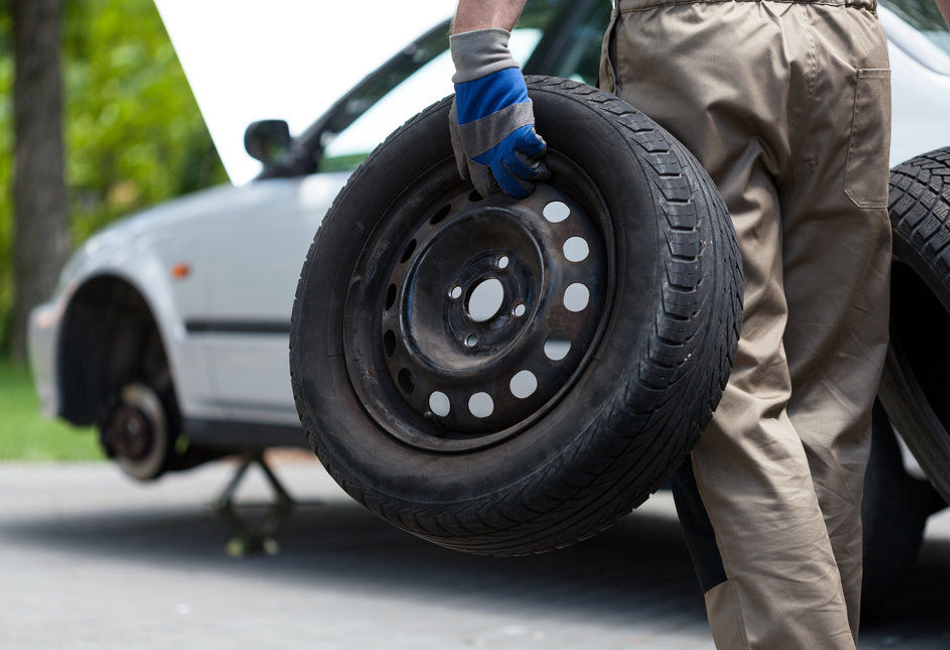 If not, drive carefully to the nearest garage and have it checked there. As soon as possible, have your flat tire repaired.
If not, drive carefully to the nearest garage and have it checked there. As soon as possible, have your flat tire repaired.
If you get a flat tire while driving, immediately pull over safely as far into the edge of the road as you can, getting as far into the hard shoulder or roadside as possible. Turn on your hazard lights and place warning cones behind the vehicle if you have them. Wearing a high-visibility jacket is a good idea, too. Then you can put on your spare tire.
For some disabled drivers, doing these tasks alone will be impossible. These drivers should always travel with a companion who can assist or perform these tasks for them.
If it’s impossible for you to change a tire in snow, you will need to contact help – either AAA or rescue services. You should always have a fully charged phone with you, or a CB radio if you are traveling in particularly remote areas.
Disabled drivers are often less mobile than other drivers, so it is especially important that they are mindful while traveling on winter roads.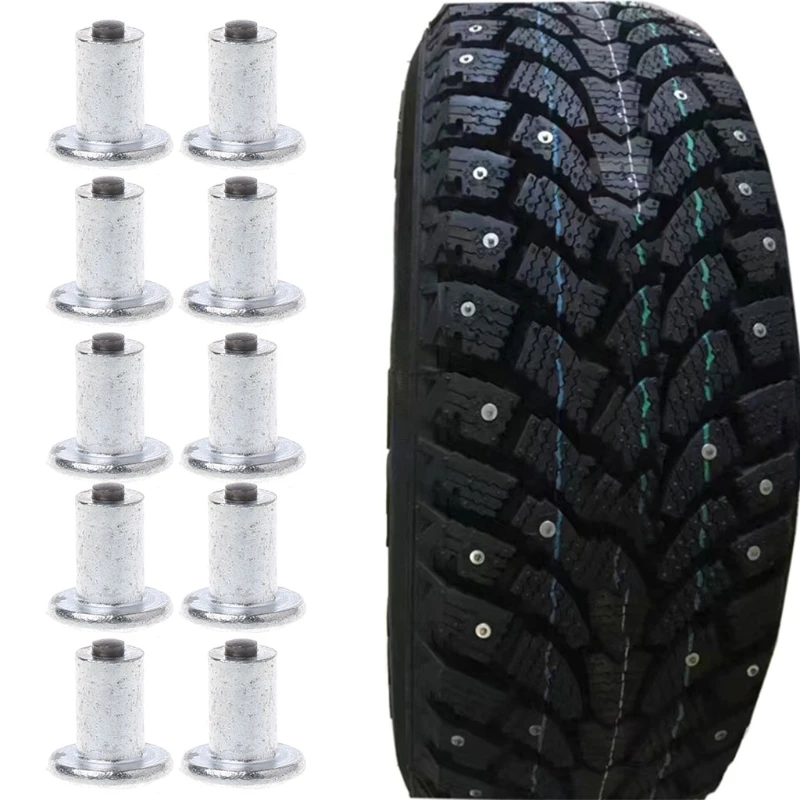 Even a relatively small incident, such as a flat tire in snow, can be highly inconvenient for a disabled permit holder to deal with. It is important to keep your disabled parking permit valid and to keep your car well stocked with safety equipment when traveling during winter.
Even a relatively small incident, such as a flat tire in snow, can be highly inconvenient for a disabled permit holder to deal with. It is important to keep your disabled parking permit valid and to keep your car well stocked with safety equipment when traveling during winter.
During the winter months, many disabled drivers have to take especially long journeys. So it is crucial that we arm ourselves with the knowledge of how to fix a flat tire in winter. Knowing how to change a tire in snow could prove incredibly convenient – or even end up being a life-saver!
Featured image by 5448208 on Pixabay
JavaScript is disabled in your browser. For our website to function properly, you must enable JavaScript. If you do not enable JavaScript, certain features will not function correctly.
Store HoursToday: Closed On Sunday
507-625-8005
96% of customers
would refer us to friends
4. 98 stars - based on 669 reviews
98 stars - based on 669 reviews
507-625-8005
Express Auto Service & Repair
465 Poplar St
Mankato, MN 56001
05
Feb,
2018
Have you ever wondered why tires go flat in cold weather? You may have noticed that your car’s tires seem to lose air as the outside temperature drops. You’re not imagining things. When cold weather hits, drivers may see a low-pressure warning light on the dash or simply observe that the tires look a bit less full than they should. This is totally normal.
The main reason for this is when the outside temperature drops, the air becomes denser and consequently lowers the tire’s pressure. Of course, tires naturally lose pressure when there is a puncture or a very slow leak. This can be caused by a tire that is not properly sealed to the wheel rim or a malfunction of the tire stem.
Colder temperatures will cause tire pressure to drop about 1 psi for every 10°F drop in air temperature. A tire pressure warning light appearing on a chilly morning doesn’t mean you have a puncture, it most often means your tires are running low on pressure.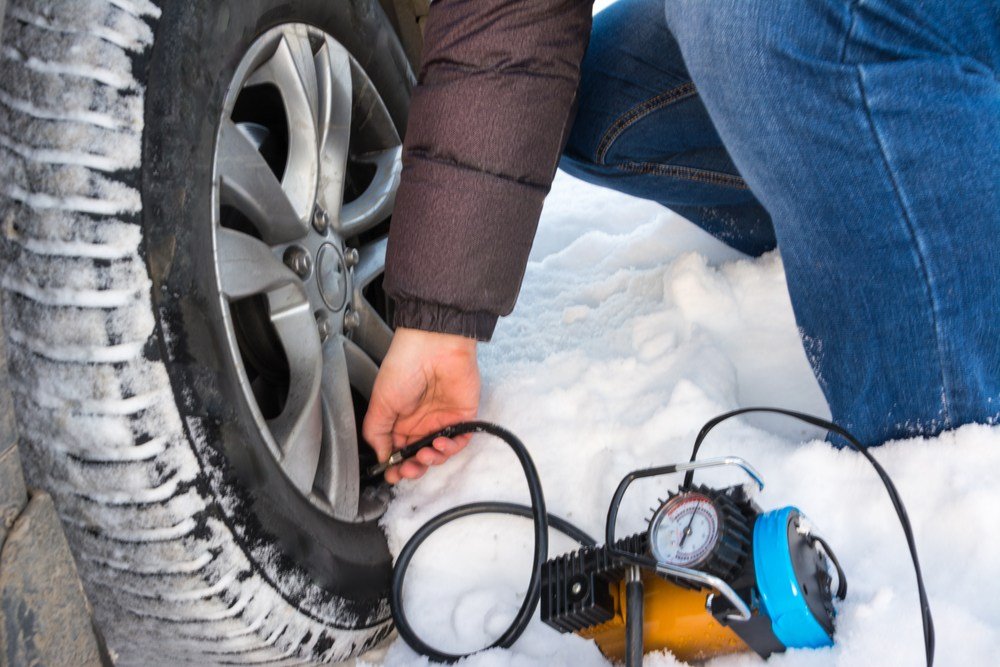 When this happens, you need to schedule a quick tire service to have the air pressure checked. In winter months, it’s important to do this on a regular basis. If you drive a few miles and the tires start to warm up, the warning light may go off. Whether it goes off or not, your tire pressure needs to be checked with a gauge and properly inflated if needed.
When this happens, you need to schedule a quick tire service to have the air pressure checked. In winter months, it’s important to do this on a regular basis. If you drive a few miles and the tires start to warm up, the warning light may go off. Whether it goes off or not, your tire pressure needs to be checked with a gauge and properly inflated if needed.
New automobiles have tire pressure monitoring systems (TPMS). These promote safety, convenience, and they have been required on all new cars since September 2007. By triggering a dashboard light when one or more tires are low on air, TPMS can take the guesswork out of wondering whether a tire is low or not.
If you’re wondering why tires go flat in cold weather, contact our ASE-certified technicians today at Express Auto Service & Repair for more information about tire service and to schedule an appointment. Our auto shop serves vehicle owners in Mankato, MN, and the neighboring communities of North Mankato, MN, New Ulm, MN, and St. Peter, MN.
Peter, MN.
Wondering why tires go flat in cold weather? Ask your tire repair expert for more information about tire service offered & schedule an appointment today.
Have you ever wondered why tires go flat in cold weather? You may have noticed that your car’s tires seem to lose air as the outside temperature drops. You’re not imagining things. When cold weather hits, drivers may see a low-pressure warning light on the dash or simply observe that the tires look a bit less full than they should. This is totally normal.
The main reason for this is when the outside temperature drops, the air becomes denser and consequently lowers the tire’s pressure. Of course, tires naturally lose pressure when there is a puncture or a very slow leak. This can be caused by a tire that is not properly sealed to the wheel rim or a malfunction of the tire stem.
Colder temperatures will cause tire pressure to drop about 1 psi for every 10°F drop in air temperature.![]() A tire pressure warning light appearing on a chilly morning doesn’t mean you have a puncture, it most often means your tires are running low on pressure. When this happens, you need to schedule a quick tire service to have the air pressure checked. In winter months, it’s important to do this on a regular basis. If you drive a few miles and the tires start to warm up, the warning light may go off. Whether it goes off or not, your tire pressure needs to be checked with a gauge and properly inflated if needed.
A tire pressure warning light appearing on a chilly morning doesn’t mean you have a puncture, it most often means your tires are running low on pressure. When this happens, you need to schedule a quick tire service to have the air pressure checked. In winter months, it’s important to do this on a regular basis. If you drive a few miles and the tires start to warm up, the warning light may go off. Whether it goes off or not, your tire pressure needs to be checked with a gauge and properly inflated if needed.
New automobiles have tire pressure monitoring systems (TPMS). These promote safety, convenience, and they have been required on all new cars since September 2007. By triggering a dashboard light when one or more tires are low on air, TPMS can take the guesswork out of wondering whether a tire is low or not.
If you’re wondering why tires go flat in cold weather, contact our ASE-certified technicians today at Express Auto Service & Repair for more information about tire service and to schedule an appointment. Our auto shop serves vehicle owners in Mankato, MN, and the neighboring communities of North Mankato, MN, New Ulm, MN, and St. Peter, MN.
Our auto shop serves vehicle owners in Mankato, MN, and the neighboring communities of North Mankato, MN, New Ulm, MN, and St. Peter, MN.
Tony & Michael Commerce Auto
Tony & Michael Commerce Auto
$$$
465 Poplar St, Mankato, MN [email protected]Mon:07:30am - 05:30pm
Tue:07:30am - 05:30pm
Wed:07:30am - 05:30pm
Thu:07:30am - 05:30pm
Fri:07:30am - 05:30pm
Sat:Closed
Sun:Closed
Facebook Twitter Blog Google Yelpamerican express, mastercard, visa, discover, cash, checks, debit, voyager network, ari, cfs, easypay, voyager, wex
What should be the pressure in the tires of the car? Does it need to be adjusted and what will happen if the pressure is changed in one direction or another?
Two friends conversation:
- Hello, I lowered the wheel!
— Absolutely?
- No, only from below . ..
..
Humor from the Web
Let's start with platitudes. The pressure must be as specified by the vehicle manufacturer. And since the average modern driver usually does not have such information, especially for him, a "cheat sheet" with the necessary numbers is hung on the middle pillar on the driver's side or on the gas tank hatch cover.
A relatively rare solution: the "reminder" is located on the gas tank cap.
A relatively rare solution: the "reminder" is located on the gas tank cap.
An important point: pressure should be measured only on cold tires. By the way, especially for pedants: cold tires are those on which the car has been without movement for at least 5 hours.
This "cheat sheet" nestled on the driver's door. An example of how tire pressure recommendations change depending on tire size.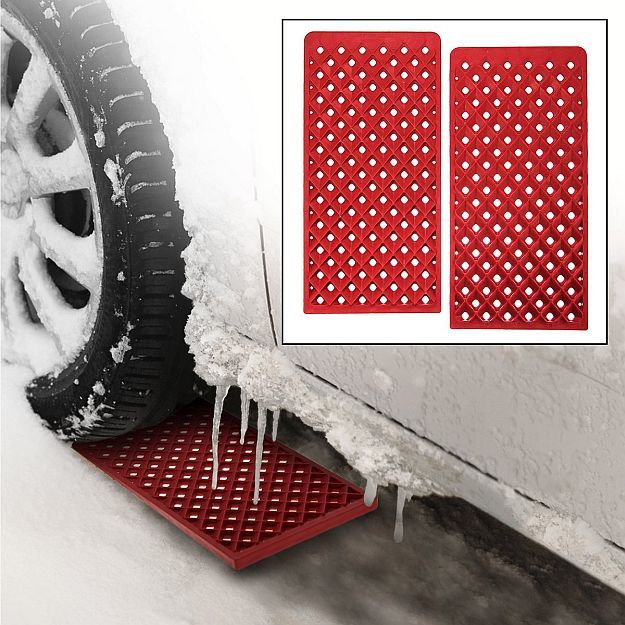
This "cheat sheet" nestled on the driver's door. An example of how tire pressure recommendations change depending on tire size.
Since car manufacturers allow the use of tires of different sizes, the pressure may also be different. In addition, the pressure in the front and rear tires has the right to both differ and be the same.
And here there is no difference in recommendations: what is in front, what is behind is the same.
And here there is no difference in recommendations: what is in front, what is behind is the same.
Related materials
Seasonal tire change: everything car owners need to know
Reduced pressure leads to an increase in tire deformation, more heating during wheel rolling, accelerated wear of the outer tread tracks. Perhaps even a violation of the integrity of the frame.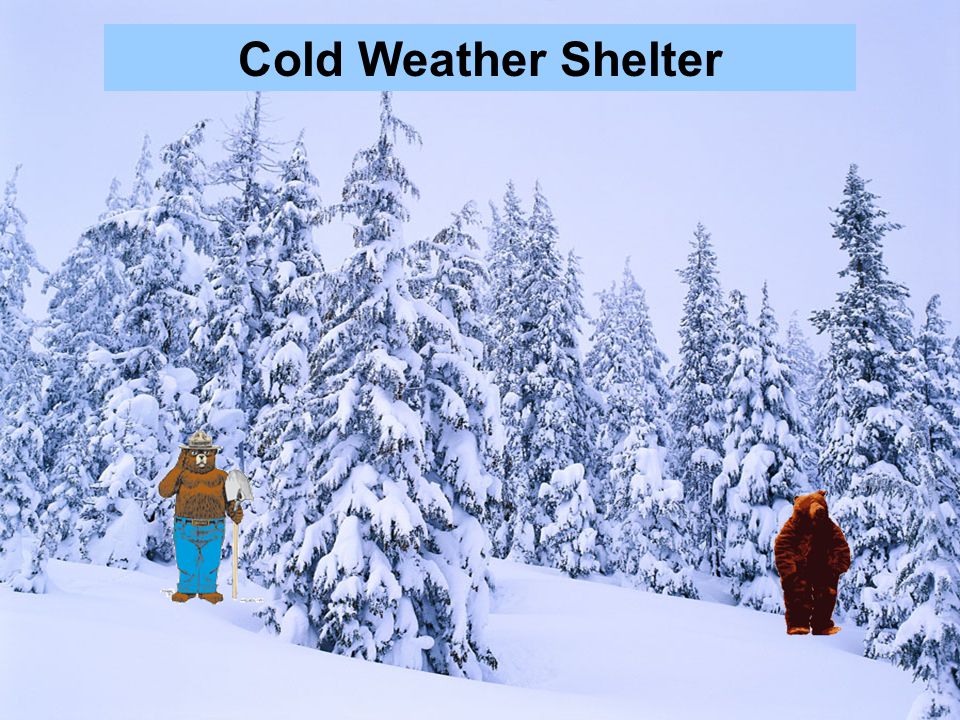 As a result, fuel consumption increases. If you hit a hole in the road, the likelihood of damage to both the disk and the tire is higher.
As a result, fuel consumption increases. If you hit a hole in the road, the likelihood of damage to both the disk and the tire is higher.
Increased pressure is an overstrain of the cords, increased wear of the middle part of the tread. In addition, when driving on a bad road, the shocks that are transmitted to the suspension and body will become more noticeable for riders. When hit in a pit, the likelihood of a tire burst increases.
Uneven pressure on all four wheels is the worst thing! At the same time, the car, while driving, inevitably leads the wheels with lower pressure to the side - in fact, sideways movement begins.
Tube tires of the past required a weekly check, especially before the advent of butyl tubes. Then the pressure began to be checked less often, and nowadays, as a rule, they are limited to visual inspection.
Tube tires of the past required a weekly inspection, especially before the advent of butyl rubber tubes. Then the pressure began to be checked less often, and nowadays, as a rule, they are limited to visual inspection.
Then the pressure began to be checked less often, and nowadays, as a rule, they are limited to visual inspection.
In a good way, you need to check the tire pressure at least once a month. And before a long journey - just a must.
Related materials
Budget Tire Compressor Test: Wrong Bees
The air pressure in an enclosed space changes by approximately 0.1 bar for every 10 degrees of temperature change. This allows, having installed summer wheels in April, not to worry about the pressure in them until the end of August, when the air temperature begins to drop. Having pumped up the wheels at the end of summer, you can already reach the seasonal shift. But having installed winter tires in October, with the first frosts, you should check the pressure a couple more times: when the temperature drops to minus ten, fifteen, and when it goes over minus twenty. But from the middle of winter until the moment of changing the wheels to summer ones, there is again a period of relaxation.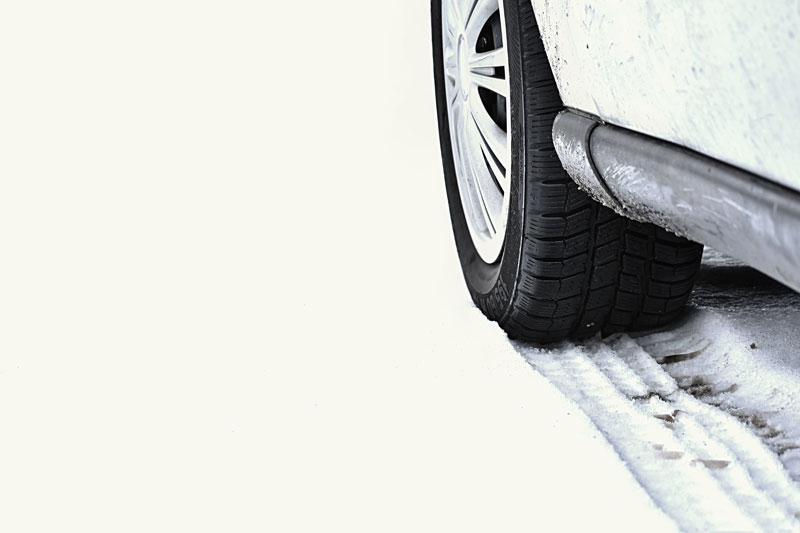
Electronics are increasingly thinking for us. Now, a tire pressure monitoring system is being installed on parts of production cars. Moreover, some simply read the wheel speeds through the ABS sensors: after all, a flat tire rotates faster, since its radius is smaller than that of inflated wheels. There are also sensors that evaluate the amount of air pressure and send information via radio to the "brains" of the car. Such devices can also be purchased separately: sensors - in the wheels, and the receiver - in the car.
By the way, a lot depends on the road you are going to take.
The owner's manuals supplied with the vehicles indicate that it is recommended to increase the pressure by 0.2-0.3 bar before driving for a long time on expressways. We advise you to follow these recommendations on all cars: it will not get worse.
The operating instructions supplied with the vehicles state that it is recommended to increase the pressure by 0.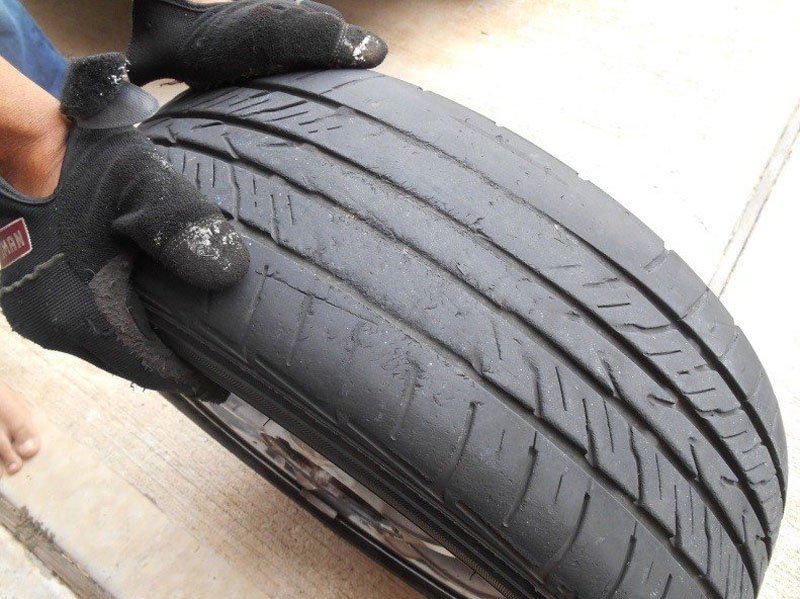 2-0.3 bar before driving for a long time on expressways. We advise you to follow these recommendations on all cars: it will not get worse.
2-0.3 bar before driving for a long time on expressways. We advise you to follow these recommendations on all cars: it will not get worse.
I don’t want to discuss overload: this, you see, is not the case. But, unfortunately, many deliberately overload the car several times a year, not only stuffing the interior and trunk to the eyeballs, but also attaching a trailer, which additionally loads the rear wheels of the tractor. In such cases, we advise you to increase the pressure in the rear tires by at least 0.2–0.3 bar. Tires will only thank you.
If you doubt the accuracy of your pressure gauge, then we advise you to check it immediately after leaving the tire shop, where you were set the obviously necessary pressure, to measure it with your own measuring device (separate or as part of the compressor). So you determine whether your pressure gauge is "lying" a lot. For the future, right on the dial, you can put a mark of the correct value.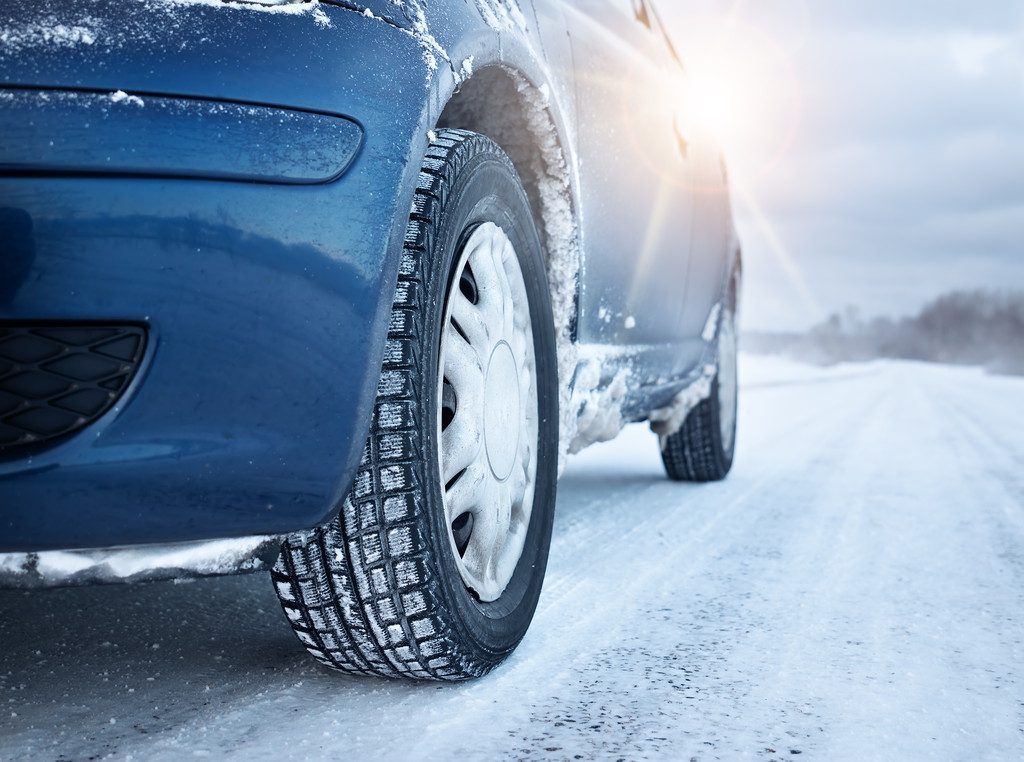
Of course, it is better to have your own, known to be correct pressure gauge, but such a toy is not cheap.
Of course, it is better to have your own, known to be correct pressure gauge, but such a toy is not cheap.
If terrible ice caught you on summer tires, say, in the country, and you need to drive some distance along an absolutely icy road by any means, then you should reduce the tire pressure to approximately 1.6 bar. Is it bad for tires? Yes. But an accident will cost more. In addition, in such a situation, one does not have to wait for high speed, and overheating of tires at near-zero temperatures most likely will not happen.
Everyone knows what caused the excellent maneuverability of Soviet tanks? That's right: wide tracks, that is, low pressure on the ground. We, having an ordinary, non-all-wheel drive car, are also able to provide it with a similar cross-country ability. If the wheels of the car sink into sand, snow or sticky mud, then it makes sense to lower the tire pressure. And not only driving, but also driven wheels.
If the wheels of the car sink into sand, snow or sticky mud, then it makes sense to lower the tire pressure. And not only driving, but also driven wheels.
We know from experience that you can often get out of the "black spot" by reducing the pressure to 1.2 bar.
We know from experience that it is often possible to get out of the "black hole" by reducing the pressure to 1.2 bar.
In a very critical situation, if you know that you have a fairly narrow disc and a relatively wide tire (such a wheel has a lower chance of self-disassembly), you can reduce the pressure to 1.0 bar.
Stalled on wet grass? Try to relieve pressure.
Stalled on wet grass? Try to relieve pressure.
Pressure reduction is also useful in other cases - for example, to overcome diagonal hanging. If you reduce the pressure in the wheels on which the car rests, their height will decrease and there will be a chance to “hook” on the suspended wheels. Of course, if the car has already laid down on the bottom, then it is too late to reduce the pressure - this will only interfere.
Of course, if the car has already laid down on the bottom, then it is too late to reduce the pressure - this will only interfere.
A concrete example of the effect of pressure on flotation. In this case, the pressure is very low, and the contact patch of the wheel with the coating is much larger than that of a conventional car.
A concrete example of the effect of pressure on patency. In this case, the pressure is very low, and the contact patch of the wheel with the coating is much larger than that of a conventional car.
In general, the pressure in tires, as well as in vessels, is better to keep normal. Any deviation has its negative consequences. Tell us, have you ever had to adjust tire pressure to improve flotation?
Tire pressure: your norm
Tire pressure: your norm
In the last article, I briefly described what determines the grip of the tire with the road in terms of physics.![]() All special reference books and scientific papers known to me describe the adhesion force of tires with the expensive well-known Amonton-Coulomb formula: F = µmg, and it is perfectly confirmed by practice, despite its simplicity. As a result, we have the only parameter included in this formula and related to the tire - the coefficient of adhesion. And behind the external simplicity of the Amonton-Coulomb formula, a rather complicated process is hidden, since the friction coefficient is not constant and clearly depends on a number of other parameters:
All special reference books and scientific papers known to me describe the adhesion force of tires with the expensive well-known Amonton-Coulomb formula: F = µmg, and it is perfectly confirmed by practice, despite its simplicity. As a result, we have the only parameter included in this formula and related to the tire - the coefficient of adhesion. And behind the external simplicity of the Amonton-Coulomb formula, a rather complicated process is hidden, since the friction coefficient is not constant and clearly depends on a number of other parameters:
Here we will talk about them in the following article.
This is the most obvious parameter influencing tire grip and does not need much discussion. Even a child knows that ice is slippery, but asphalt is not.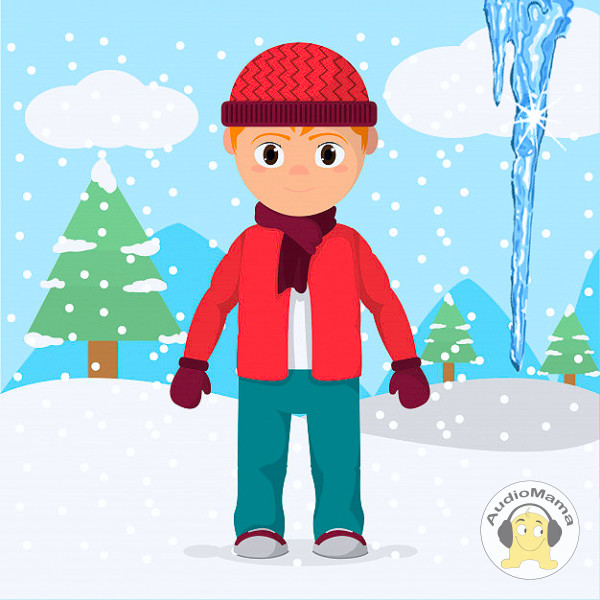 Here is a classic set of tire adhesion coefficients with different road surfaces:
Here is a classic set of tire adhesion coefficients with different road surfaces:
0.1
0.05
The values are vice-up, may differ depending on the guide and, in addition, were relevant 20-30 years ago. According to some reports, modern tires can provide grip on dry asphalt with a coefficient of 1.0-1.1. So, it is quite possible that the plate is outdated, but I still recommend that you focus on it - you will be safer
Practical advice
1. Remember that the condition of the road surface has a very, very strong effect on tire grip. The braking distance on ice in winter can exceed the braking distance on asphalt in summer up to 10 times. Even in summer, when it rains, the braking distance can be doubled compared to the braking distance on dry pavement.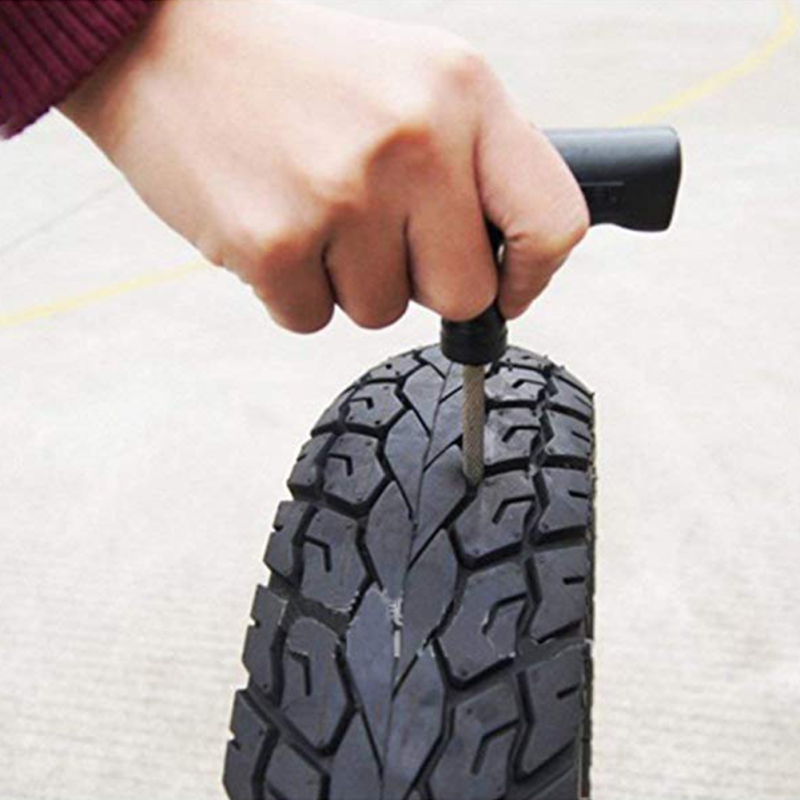 So always think about the type of surface you are driving on and choose the appropriate distance from the lead car and speed before the turn.
So always think about the type of surface you are driving on and choose the appropriate distance from the lead car and speed before the turn.
The photo below shows winter and summer tires. I draw your attention to the fact that it is not the tread pattern itself that is important (herringbone, striped, checkered, lined), but its type. Of course, they have a different pattern, but it is not it that fundamentally distinguishes tires from each other, but a different type of tread . The summer tire has smooth edges, has continuous longitudinal sipe grooves, no sipes, and the groove depth is noticeably shallower than that of a winter tire, although this is not visible from the figure. A winter tire, on the other hand, has rough, sharp edges that help break up the snow-ice crust and “teeth” catch on the snow mass. Mud tires have similar and more pronounced "teeth", allowing better grip on loose surfaces.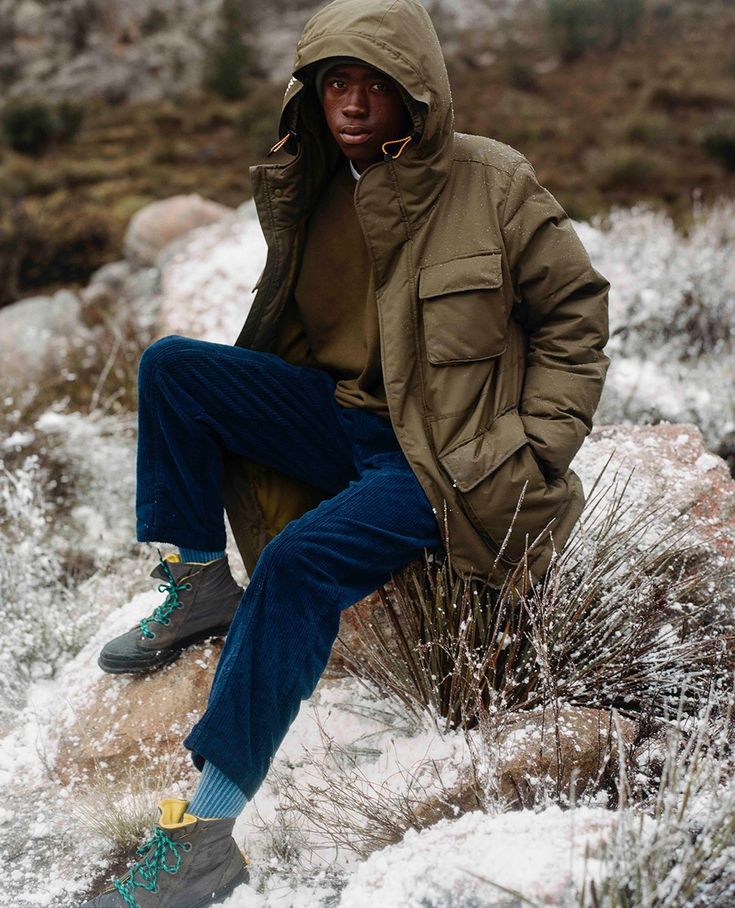 The tread of a winter tire itself is dotted with many slots - lamellae, the grooves are deeper than those of a summer tire. And the most important difference between winter and summer tires is that summer tires are hard - for asphalt, and winter tires are soft - for snow and frost.
The tread of a winter tire itself is dotted with many slots - lamellae, the grooves are deeper than those of a summer tire. And the most important difference between winter and summer tires is that summer tires are hard - for asphalt, and winter tires are soft - for snow and frost.
Logic is as follows:
Soft composition => Good adhesion in the cold and bad in the heat
Hard composition => Good adhesion with warm asphalt and bad in the cold
61 recommendations
2. Always consider the quality of the tires you have on your car. Remember that winter tires will never hold paved roads as well as summer tires due to the nature of the rubber compound. Moreover, winter tires hold summer asphalt even worse than winter tires. And economy class summer tires will always be inferior in terms of grip to expensive premium tires. Keep this in mind and choose your driving style according to the capabilities of your car and your tires.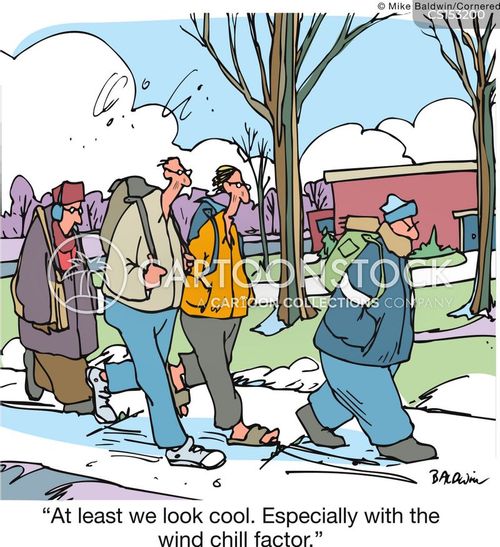
3. Don't skimp on tires, tires are the only link between your car and the road and your safety. Use summer tires in summer, don't use winter tires. Avoid all-season tires, they do not give good grip in summer or winter. Do not save money and buy cheap economy tires. It is better to overpay for a good set of tires and thereby save on body repairs, and even on treatment ...
As for the pattern itself, it is more necessary for the aesthetic perception of the tire, and even the tire manufacturers themselves say that the pattern is a marketing tool. You can't look at a tire display in a store and determine the composition of their rubber, can you? You can not. And to distinguish one drawing from another is very even. That's where they stand...
If you've ever paid attention to racing tires, in particular Formula 1 cars, you've probably noticed that racing tires have no pattern at all.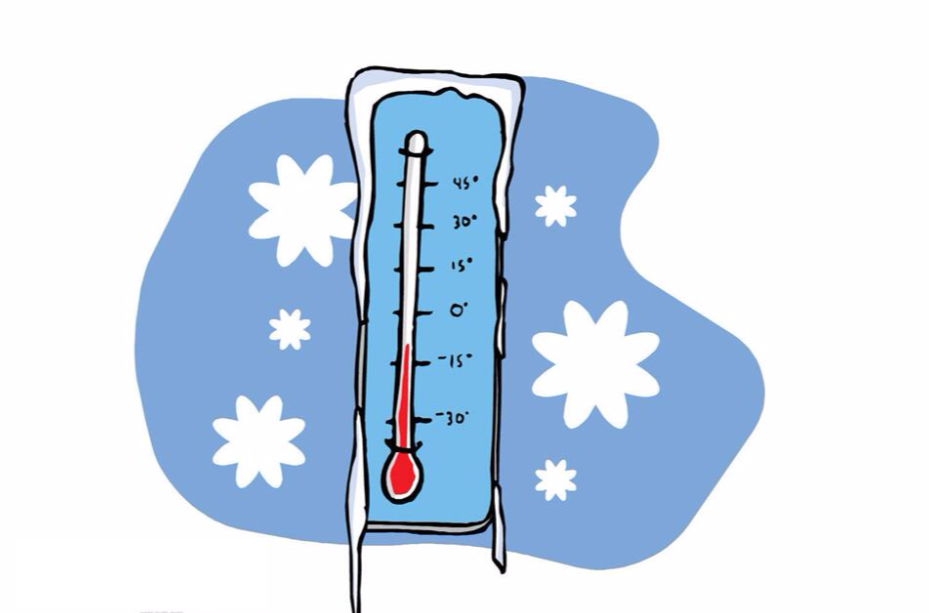 There is a protector, but there is no pattern. And this is a racing type of tread for dry asphalt.
There is a protector, but there is no pattern. And this is a racing type of tread for dry asphalt.
But rain tires already have a pattern, there is a rain-type tread, and the pattern is made in such a way as to most effectively remove water from the contact patch so that water does not interfere with the contact of the tire with asphalt. At the same time, the composition of the rubber is special, especially for wet asphalt, and it is he who sets the grip. Thus, grooves in the rain tread cannot affect the grip as such, they only prevent the tire from losing contact with the road, and grip in the presence of contact provides rubber compound .
This logic is as follows:
rain type of tread => effective removal of water from the contact patch => better contact between the tire and the road => less loss of initial grip properties => providing grip due to rubber composition
wrong logic:
rain tread type => improved wet grip due to herringbone pattern
Practical recommendations
.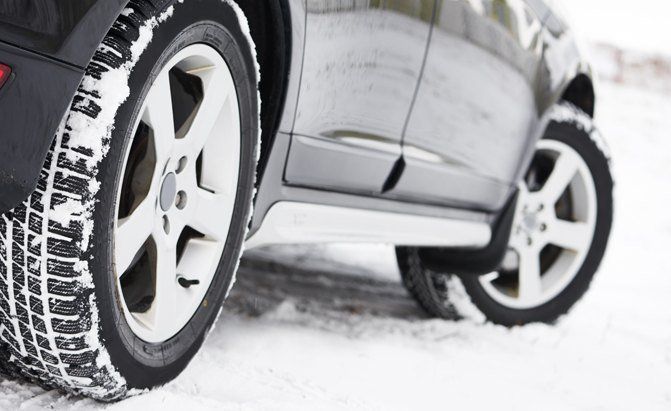 Perhaps your trendy pattern is "painted" on the high-quality tread of expensive tires, then you have really good traction due to the good rubber compound. But even this does not give you a reason to be reckless, because even the best tires cannot bypass the laws of physics.
Perhaps your trendy pattern is "painted" on the high-quality tread of expensive tires, then you have really good traction due to the good rubber compound. But even this does not give you a reason to be reckless, because even the best tires cannot bypass the laws of physics.
5. When choosing tires, you should not chase after a beautiful tread pattern. You can't tell the quality of a tire from the picture, everything is determined by the composition of the rubber compound, which is not visible to the eye. Choose premium tires from leading manufacturers, rely on independent tire tests and research.
The degree of tread wear has another effect on tire grip. There is such a popular misconception: bald, that is, heavily worn tires do not hold the road well, especially wet, because there is no pattern. Of course, in the case of rain, this is partly true. Smooth tires - the same racing slicks literally float on a water film (hydroplaning phenomenon), and rain grooves in the tread, as I wrote above, help to drain water and avoid this.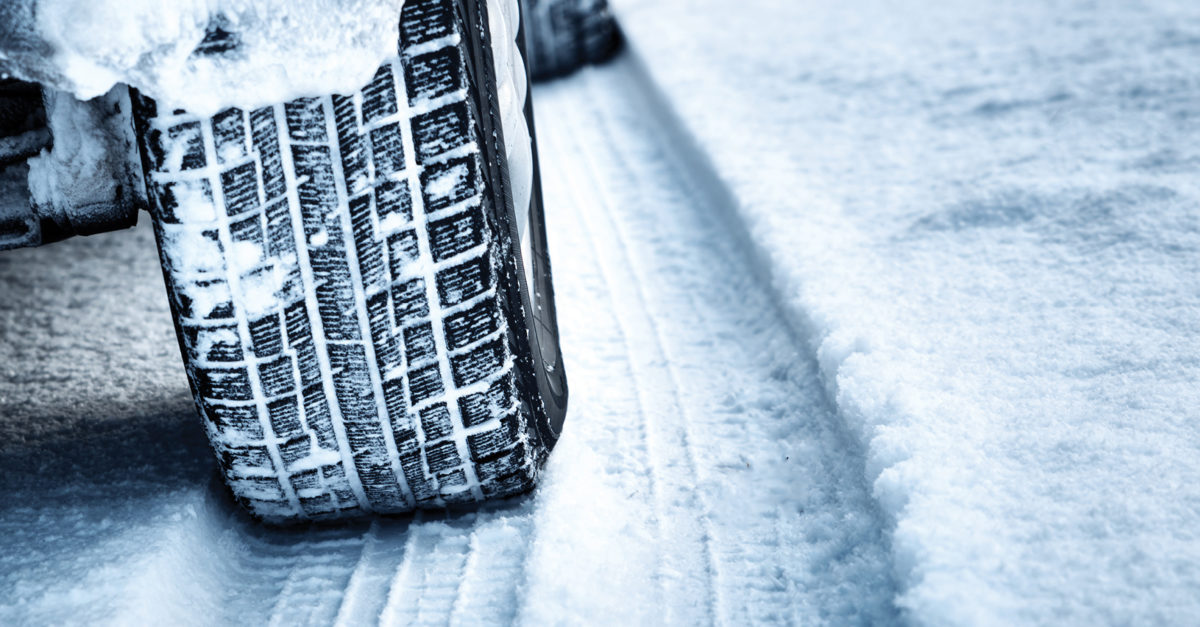
But this is not the only reason why bald tires hold the road worse, and in the case of dry asphalt, not at all. It's just that the composition of the tread rubber, which is responsible for traction, is located in the surface layer of the tire, deeper than which is another rubber that plays a different role. And when the tire wears out, this tenacious rubber simply does not remain, and the rubber under the tread cannot provide proper grip, since it is not designed for this. Thus, tread wear essentially does not mean abrasion of the pattern, but the disappearance of the rubber compound that provides good grip .
There is also an opinion that a half-worn tire has better grip than a new one, but this is more true in corners, and more on that in one of the following sections.
So it is the composition of the tread rubber that has the greatest influence on the grip of the tire with the road. And a wide, low-profile sports tire offers better traction than an eco tire with narrow and high tread, not because it is wide or with a large diameter, and not because it has a new asymmetric tread pattern, but because it has a sports tread with an appropriate rubber compound.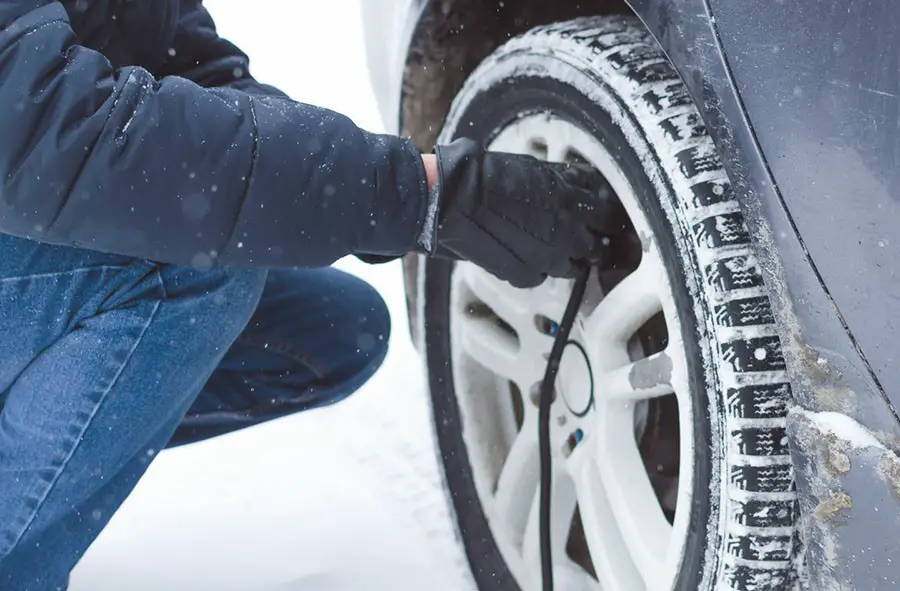 .
.
As a result, incorrect logic:
Bald tire => Lack of tread pattern => Deterioration of adhesion
Correct logic:
Lysya tire => Lack of rubber layer with a composition that ensures good adherence => worship => wise clutches
Practical recommendations
6. Do not be afraid to drive on tires with partial tread wear, because of this they only hold the road better. But driving on completely worn out "bald" tires becomes dangerous, especially on wet roads. Watch for wear and change tires to new ones in time.
Deformation of any body leads to its heating. The tire deforms during driving, especially during acceleration, braking and cornering, and, as a result, heats up . With rectilinear and uniform movement, it is also deformed, but to a greater extent due to vertical vibrations due to road irregularities.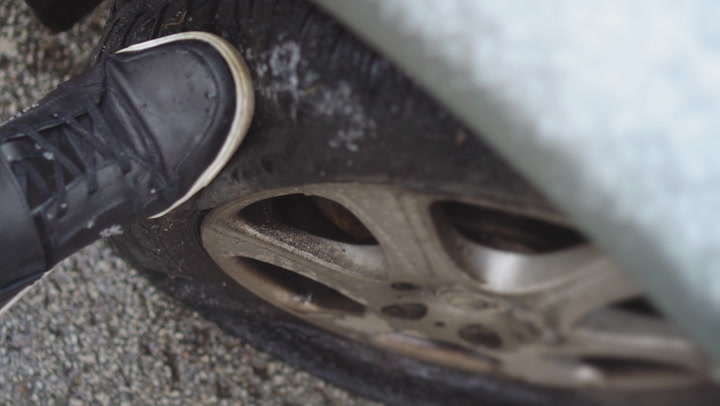 Therefore, the temperature of the tire, say, an hour after the start of the trip, differs significantly from its temperature before the trip, and even more significantly if the car was “annealed” - they braked a lot and intensively, accelerated and “tumbled” into turns with a breeze.
Therefore, the temperature of the tire, say, an hour after the start of the trip, differs significantly from its temperature before the trip, and even more significantly if the car was “annealed” - they braked a lot and intensively, accelerated and “tumbled” into turns with a breeze.
The grip coefficient of the tire depends on the temperature of the tire, and its maximum corresponds to a certain optimum temperature . That is, on a cold tire, the coefficient has some value, when heated, it increases, and when the tire overheats, it decreases again. The optimal temperature for different tires is different, for summer road tires it is in the range of 60-90 degrees, for racing tires it is higher and can exceed 100 degrees.
In normal road driving it is important not to overheat the tire, but in car racing it is important to avoid not only overheating but also underheating. Undercooling in a race means not enough friction coefficient, and therefore not enough piloting speed.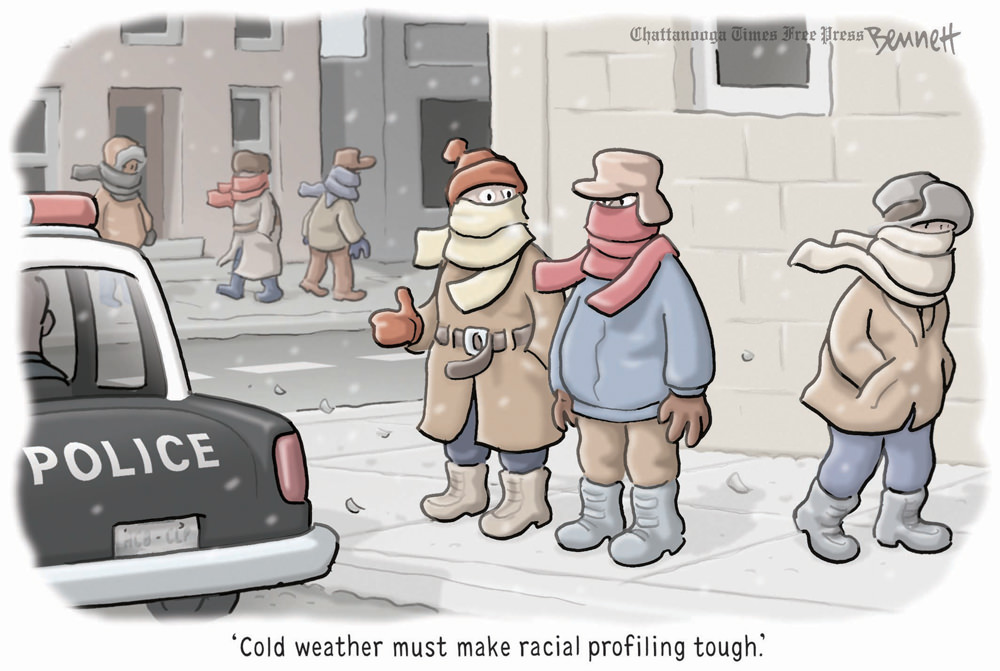 Overheating is dangerous not only for a temporary deterioration in traction, but also for increased tire tread wear, which means a premature decrease in grip, but for a worn tire forever.
Overheating is dangerous not only for a temporary deterioration in traction, but also for increased tire tread wear, which means a premature decrease in grip, but for a worn tire forever.
Practical recommendations
7. If you are a fan of dynamic driving, went on a trip, and there is no scorching heat on the street, you should not immediately dynamically accelerate and brake and “lay” into turns. Give the tires some time to warm up to operating temperature and achieve maximum traction.
8. If you go to the race track, remember that regular road tires can overheat from racing and deteriorate their performance either temporarily, while overheated, or already permanently, if you do not track their overheating in time and they wear out quickly.
So just the tire width affects the temperature stability and resistance to overheating and wear. The wider the tire, the higher its heat capacity and better airflow, thereby better heat dissipation, less heat and wear. Therefore, a wide tire has less risk of losing traction during active road or racing and retains its original traction properties longer. Although with the same composition, a wide tire initially has the same grip coefficient as a narrow tire, but it retains it longer . So for lovers of active “annealing”, a wide tire should be preferable to a narrow one.
The wider the tire, the higher its heat capacity and better airflow, thereby better heat dissipation, less heat and wear. Therefore, a wide tire has less risk of losing traction during active road or racing and retains its original traction properties longer. Although with the same composition, a wide tire initially has the same grip coefficient as a narrow tire, but it retains it longer . So for lovers of active “annealing”, a wide tire should be preferable to a narrow one.
However, for racing drivers it is important to find a middle ground. After all, by increasing the width of the rubber beyond measure, as a result, you may not reach the optimum temperature. An overly wide tire will cool too much, and there is a risk that, no matter how hard we try, we will not heat the tire above 60 degrees, which means we will get a lower coefficient of adhesion than if we put a narrower tire and warm it up to the desired temperature.
So when the width of the tire profile increases, the following logic takes place:
wide tire => less overheating and wear => long retention of the original grip properties under increased loads
wrong logic:
wide2 > more contact patch area => more grip force Thus, tire width does not directly affect tire grip, but indirectly. I repeat, with the same rubber composition, a wide tire initially has the same grip coefficient as a narrow tire, but retains it longer due to less risk of overheating and less wear.
I repeat, with the same rubber composition, a wide tire initially has the same grip coefficient as a narrow tire, but retains it longer due to less risk of overheating and less wear.
Practical advice
manufacturers. For the track, it is best to use specialized tires - semi-slicks or slicks.
10. Also remember that tires that are too wide on your particular vehicle may not warm up to operating temperature due to intense cooling, and then you will not be able to achieve maximum traction and fully exploit the potential of your car. In everything, a measure is needed - including the installation of tires of optimal width.
Another factor that affects tire heating is the air pressure to which it is inflated. As I already wrote, the tire heats up from deformation. The greater the deformation, the greater the heating. And the more air pressure in the tire, the harder it is and the less deformation and the less heating. The reverse is also true: low pressure leads to rapid heating and possibly overheating. Therefore, in the instructions for any car, along with the recommended tire pressure, you can see a recommendation to pump tires when driving with a large load or at high speed.
And the more air pressure in the tire, the harder it is and the less deformation and the less heating. The reverse is also true: low pressure leads to rapid heating and possibly overheating. Therefore, in the instructions for any car, along with the recommended tire pressure, you can see a recommendation to pump tires when driving with a large load or at high speed.
So flat tires will impair driving performance due to more tire deformation. But this deformation is bad both in itself (it increases the slip, more on that below), and due to the increased heating of the tire.
Result:
reduced tire pressure => more softness of the tire => more tire deformation => increased heat => increased risk of temporary loss of grip and premature wear
Do not confuse tire tread temperature with tire air temperature. From the Law of Mendeleev-Clapeyron
PV = RT (7)
where P is the air pressure, V-the volume of air, R is a universal gas constant, T-air temperature,
It immediately follows, which is when air temperature rises and increases and increases and its pressure, and vice versa, when it gets cold, the pressure decreases .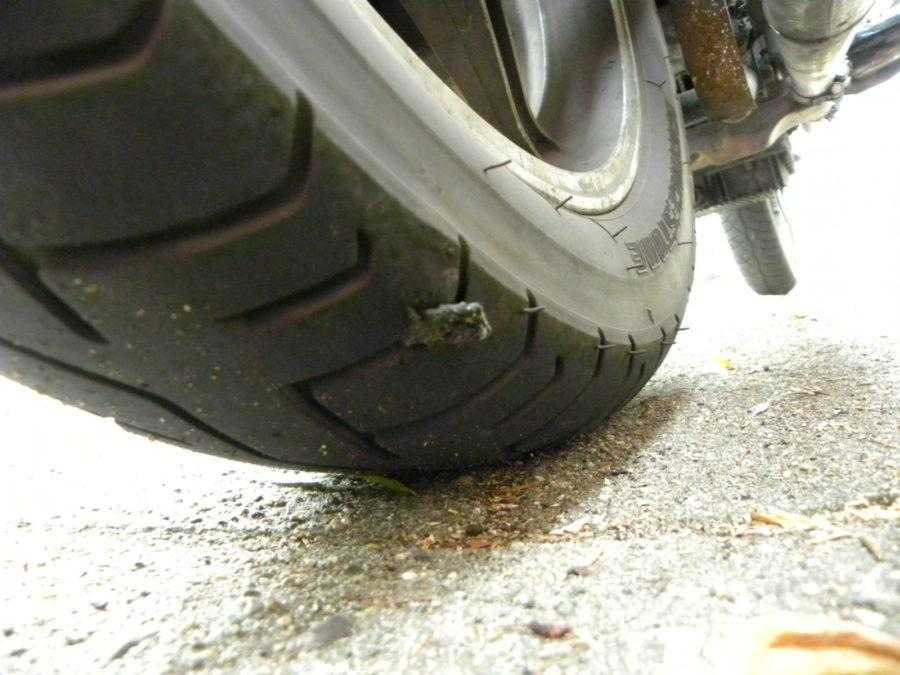 This means that if today at 0 degrees outside you inflated the tires to the optimum pressure, and tomorrow it gets cold to -15, you need to go pump up the tires . Although the air has not gone anywhere, its pressure has decreased markedly due to the decrease in temperature. Similarly, with a sharp warming, it makes sense to bleed air and get rid of excess pressure.
This means that if today at 0 degrees outside you inflated the tires to the optimum pressure, and tomorrow it gets cold to -15, you need to go pump up the tires . Although the air has not gone anywhere, its pressure has decreased markedly due to the decrease in temperature. Similarly, with a sharp warming, it makes sense to bleed air and get rid of excess pressure.
i.e.:
cold outside => lower tire temperature => lower tire pressure => need to inflate tires
But this fact does not contradict the fact that before driving at high speed, including on the race track, it is necessary to inflate the tires to prevent them from overheating. After all, tires overheat from increased deformation due to lack of air pressure. And an excess of pressure leads to heating of the air in the tire itself.
Practical advice
11. Regularly (every 1-2 weeks) do a routine tire pressure check using a pressure gauge.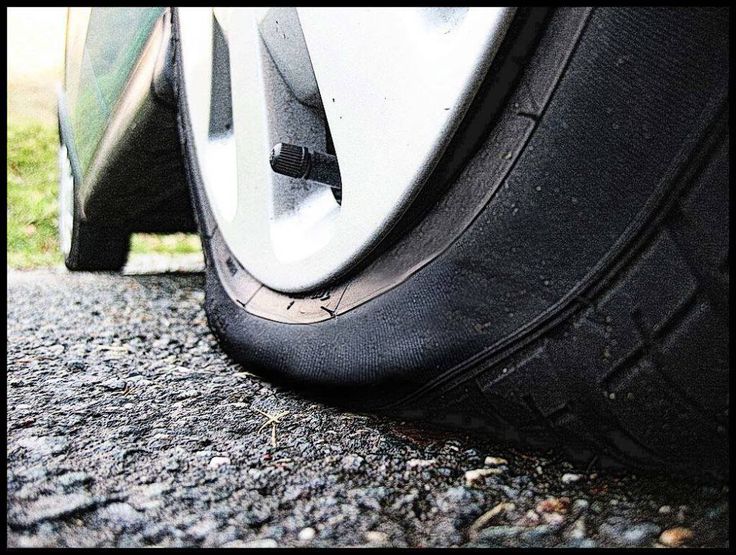 In the event of a sharp change in temperature outside, do an unscheduled tire pressure check. If the check showed a discrepancy between the pressure recommended by the VEHICLE manufacturer, ensure the required pressure - pump up flat tires or deflate over-inflated tires.
In the event of a sharp change in temperature outside, do an unscheduled tire pressure check. If the check showed a discrepancy between the pressure recommended by the VEHICLE manufacturer, ensure the required pressure - pump up flat tires or deflate over-inflated tires.
12. Before driving at high speeds and/or with heavy loads or on the race track, increase the tire pressure by about 20%. Do not forget to release excess air at the end of the trip.
13. Remember that the air pressure in the tires should be checked when the tires are cold - at least 2 hours after the end of the trip. If the car has traveled more than 1 km, the air in the tires heats up, and the pressure gauge will show too high pressure.
In this article, I examined the effect of the following parameters on the tire grip coefficient:
And here are the conclusions:
1. With road surface all simple: tires hold well on asphalt and poorly on ice. The braking distance on these surfaces can differ even by 10 times.
With road surface all simple: tires hold well on asphalt and poorly on ice. The braking distance on these surfaces can differ even by 10 times.
2. As for the tire itself, the tread rubber compound makes the biggest contribution to grip. The tread pattern does not affect grip on dry pavement, but indirectly affects wet pavement - it squeezes water out of the contact patch and prevents the tire from floating on a water wedge, but the grip itself provides the rubber composition. The appearance of the tread pattern is an aesthetic moment; you cannot determine the quality of the grip of the tire with the road by eye. Therefore, a bald worn tire is not bad for the lack of a pattern, but for the lack of tread rubber.
3. The coefficient of adhesion depends on the temperature of the tire and reaches its maximum when it is heated to an operating temperature of 60-90 degrees. The wide profile of the tire insures it against overheating and provides less wear and temperature stability due to better air cooling.